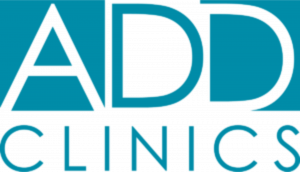Exploring the Impact of ADD on the Default Mode Network and Task Switching in the Brain
In neurotypical individuals, the DMN deactivates when the brain transitions from internal thoughts to external tasks. This "task-negative" network is typically quieted when focused attention is required. In individuals with ADD, this deactivation often fails to occur efficiently, which may explain persistent distractibility, difficulty initiating tasks, and rapid loss of focus.
Dr. Stanford Owen, owner of ADD Clinics in Gulfport, Mississippi, emphasizes that recent brain imaging studies are changing how clinicians view the neurological basis of ADD. “What appears to be inattention or impulsivity may actually be a failure of the brain to suppress the DMN when transitioning to goal-directed activity,” said Owen. “This creates a state of mental noise—background brain chatter—that competes with incoming tasks for cognitive resources.”
The DMN includes structures such as the medial prefrontal cortex, posterior cingulate cortex, and angular gyrus—regions associated with self-referential thinking, daydreaming, memory recall, and future planning. In individuals with ADD, these regions often remain overactive, even when trying to focus on external goals. This pattern disrupts the engagement of the brain’s task-positive networks responsible for attention, working memory, and problem-solving.
One of the functional challenges related to DMN dysregulation in ADD is impaired task switching. Task switching involves disengaging from one cognitive activity and re-engaging in another. For those with ADD, the brain can become “stuck” in the DMN, resulting in delays when switching from rest to action or from one task to the next. This may explain why transitions—such as getting started in the morning, switching between school subjects, or moving from planning to execution—are often described as particularly difficult.
This dysfunction also contributes to what many patients describe as “brain fog” or the sense of mentally spinning without making progress. Because the brain remains partially tethered to internally focused activity, attention is fragmented, and productivity suffers.
In clinical practice, identifying these neurobiological dynamics has informed more targeted interventions. Imaging techniques such as functional MRI (fMRI) and electroencephalogram (EEG) studies have revealed that therapies aimed at strengthening prefrontal engagement and reducing DMN hyperactivity may offer benefits in treatment planning. These include cognitive behavioral strategies, neurofeedback, and pharmacologic approaches designed to improve cortical regulation.
Sleep quality, physical activity, and mindfulness-based practices have also been shown to help reduce DMN overactivity. By strengthening the ability of the brain to deactivate its default setting when needed, these interventions may improve cognitive control and executive function in those with ADD.
Understanding the DMN’s role also helps clarify why individuals with ADD may experience hyperfocus under certain conditions. When a task is novel, emotionally engaging, or highly stimulating, the brain’s reward system can override the DMN and lock into the present moment. This creates a paradox in which the same individual who struggles to complete routine assignments may simultaneously become absorbed for hours in a favorite activity. The inconsistency is not due to lack of willpower, but rather to an underlying imbalance in the neural systems governing attention allocation.
Dr. Owen notes that this deeper understanding of brain network function is transforming not only diagnosis but also public perception of ADD. “There is increasing recognition that ADD is not simply a behavioral issue, but a network-based condition involving complex brain dynamics,” said Owen. “Addressing it requires both neurological insight and individualized treatment strategies.”
Ongoing research is examining how the DMN interacts with other neural networks such as the Salience Network (which detects what is important in the environment) and the Central Executive Network (which governs high-level problem-solving). Disruptions in the balance between these systems are believed to underlie many of the hallmark traits associated with ADD, including distractibility, poor time management, and inconsistent performance.
As clinical understanding continues to evolve, new tools for early screening and neurobiological assessment are expected to improve diagnostic precision. These tools aim to go beyond symptom checklists and move toward real-time measures of brain function, helping to tailor interventions more effectively for individuals across the ADD spectrum.
The role of the Default Mode Network in ADD represents an important step forward in linking cognitive behavior to observable brain function. It offers a framework for understanding why tasks that seem simple to others may feel overwhelming to those with ADD—and why small shifts in environmental or cognitive load can lead to significant performance changes.
Morgan Thomas
Rhino Digital, LLC
+1 504-875-5036
email us here
Visit us on social media:
Facebook
Legal Disclaimer:
EIN Presswire provides this news content "as is" without warranty of any kind. We do not accept any responsibility or liability for the accuracy, content, images, videos, licenses, completeness, legality, or reliability of the information contained in this article. If you have any complaints or copyright issues related to this article, kindly contact the author above.
Discount Custom Cabinets Expands Multi-Family Cabinet Solutions to Meet Growing Developer Demand
Lakeith Kentrell Hudson Introduces Spiral Semantics: A Framework for Navigating Truth, Perception, and Duality
RF Filter Market to Witness Comprehensive Growth by 2031
Kalendarium
Więcej ważnych informacji
 Jedynka Newserii
Jedynka Newserii

 Jedynka Newserii
Jedynka Newserii

Konsument

Jednorazowe opakowania z plastiku mają do 2030 roku zniknąć z lokali gastronomicznych. Przekonanie klientów do pojemników wielorazowych może być wyzwaniem
Unijne przepisy zobowiązują firmy z branży HoReCa do ograniczenia w perspektywie 2030 roku jednorazowych opakowań z tworzyw sztucznych i zastąpienia choć części z nich opakowaniami wielorazowymi. Choć wielu Europejczyków pozytywnie odnosi się do oferowania opakowań wielorazowych przez lokale gastronomiczne, zaangażowanie użytkowników w zwrot pojemników może się okazać wyzwaniem.
Handel
Zbliża się szczyt UE–Chiny. Głównym tematem spotkania będzie polityka handlowa, w tym cła

Unia Europejska i Chiny odpowiadają łącznie za niemal 30 proc. światowego handlu, ale Europa wciąż ma ogromny deficyt handlowy w wymianie z Państwem Środka. Ostatnio relacje między Pekinem a Brukselą były pełne napięć, choćby w kwestii europejskich ceł na elektryki, chińskich ograniczeń eksportu metali ziem rzadkich, czy braku równowagi w dostępie do rynków. Szczyt UE–Chiny odbędzie się ponad półtora roku po poprzednim.
Polityka
Dane statystyczne pomogą przyspieszyć rozwój turystyki. Posłużą również do promocji turystycznej Polski

Główny Urząd Statystyczny we współpracy z resortem turystyki buduje nowoczesny portal analityczny Turystyka+. To interaktywne narzędzie, które umożliwia śledzenie zmian i porównywanie danych. Celem projektu jest wsparcie rozwoju turystyki na wielu poziomach – nie tylko krajowym, ale również lokalnym i regionalnym. Ma on być pomocny zarówno w podejmowaniu decyzji politycznych dotyczących infrastruktury turystycznej, jak i dla przedsiębiorców, co ma się przełożyć na rozwój sektora i gospodarki.
Partner serwisu
Szkolenia

Akademia Newserii
Akademia Newserii to projekt, w ramach którego najlepsi polscy dziennikarze biznesowi, giełdowi oraz lifestylowi, a także szkoleniowcy z wieloletnim doświadczeniem dzielą się swoją wiedzą nt. pracy z mediami.










.gif)

 |
| |
| |
|